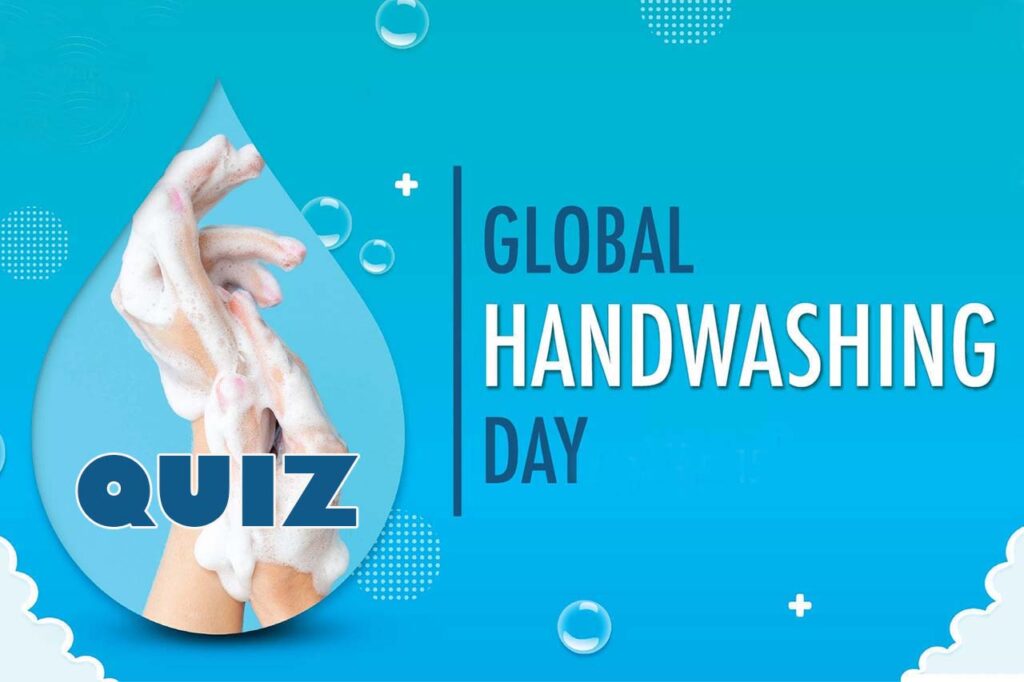Global Hand Washing Day is an international hand washing promotion campaign to motivate and mobilize people around the world to improve their hand washing habits. Washing hands at critical points both during the day and washing with soap are important. In 2008, Global Handwashing Day was celebrated for the first time.
Check your general awareness about this key habit of hygiene.
Results
Global Handwashing Day Quiz
Brought to you by Kendriya Vidyalaya Adoor Library
Well done, guest! You deserve a trophy!Reload quiz

Global Handwashing Day Quiz
Brought to you by Kendriya Vidyalaya Adoor Library
Nice try, guest. Why don't you take the quiz again?Reload quiz


#1. What percentage of alcohol should hand sanitizer contain?

#2. When washing your hands, you should scrub them for at least
Scrubbing hands together for at least 20 seconds is enough time for the soap to work its magic and get rid of possible contaminating bacteria.

#3. How long do germs survive on your hands?

#4. Which is best, hand sanitizer or soap and water?
Washing hands with soap and water is the best way to remove all types of germs and chemicals. If soap and water are not available, use an alcohol-based hand sanitizer with at least 60% alcohol. A sanitizer does not “clean” your hands, as effectively as your soap or hand wash would. It might be effective in killing the bacteria’s exposed to your hands but a hand wash will remove the dirt, debris, germs as well as wash it away from your hands and entire body with water.
#5. Hand hygiene is the single most important intervention to prevent healthcare-associated infections.
#6. Who is known as the Father of Hand Hygiene?
Ignaz Semmelweis was the first doctor to discover the importance for medical professionals of hand washing. In the 19th century, it was common for women to die from an illness contracted during or after childbirth, known as childbed fever. While working at an obstetric department in Vienna, Austria, Semmelweis noticed that women delivered by physicians and medical students had a much higher mortality rate than women delivered by midwives. He concluded that the problem was that physicians were handling corpses during autopsies before attending to pregnant women, and determined that hand washing would prevent them from passing on illness.
After Semmelweis initiated a mandatory hand-washing policy, the mortality rate for women delivered by doctors fell from 18 per cent to 2 per cent – the same as it was for midwives. When he began washing medical instruments, it fell to just 1 per cent. (newscientist.com)





